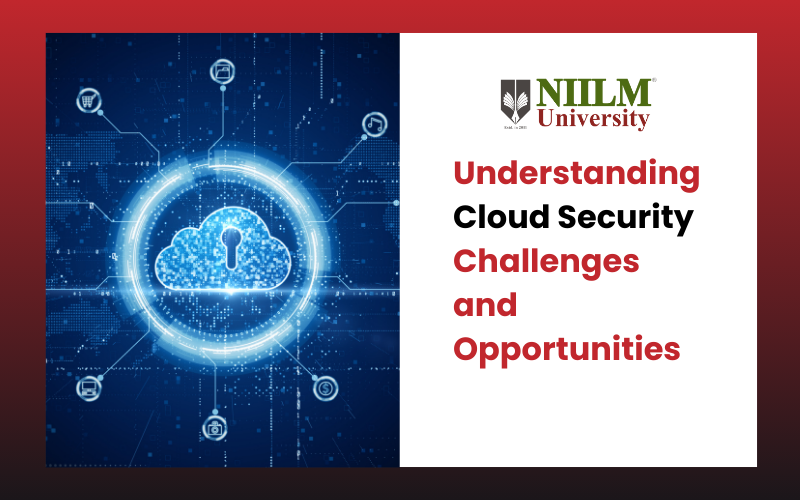Admission Enquiry

Unlock the cloud's potential! Explore security challenges & opportunities to keep your data safe in the cloud.
The cloud has revolutionised how businesses operate, offering scalability, agility, and cost-effectiveness. However, this shift to a distributed infrastructure presents unique security challenges alongside exciting opportunities. This article dives into both sides of the coin, exploring the hurdles and the potential benefits of securing the cloud environment.
What is Cloud Security?
The methods and procedures used to safeguard information, programs, and services housed in cloud environments are referred to as cloud security. It includes a wide range of guidelines, regulations, practices, and technological tools that cooperate to protect cloud-based systems and guarantee data availability, confidentiality, and integrity.
Key Components of Cloud Security
Data Encryption: The process of converting data into a coded format to prevent unauthorized access.
Identity and Access Management (IAM): A framework for ensuring that the right individuals have appropriate access to resources.
Security Information and Event Management (SIEM): Tools and services offering real-time analysis of security alerts generated by applications and network hardware.
Firewalls: Network security systems that monitor and control incoming and outgoing network traffic based on predetermined security rules.
Intrusion Detection and Prevention Systems (IDPS): Technologies that detect and prevent unauthorized access to networks and systems.
Virtual Private Network (VPN): A secure connection over the internet that encrypts data and masks the user's IP address.
Challenges in Cloud Security
Shared Responsibility Model
Cloud providers handle the underlying infrastructure security, but the responsibility for securing data and applications falls on the customer. This shared model requires clear understanding and communication to avoid security gaps.
Misconfiguration
The vast array of cloud settings can lead to accidental misconfigurations, creating vulnerabilities. Automation and strong governance processes can mitigate this risk.
Data Security and Privacy
Sensitive data stored in the cloud raises concerns about data breaches and compliance with regulations. Encryption, access controls, and data residency policies are crucial.
Insider Threats
Malicious or negligent insiders with authorised access can pose a significant threat. Implementing robust access controls and monitoring activities can help address this.
Evolving Threats
The cyber threat landscape is ever-changing. Cloud environments need continuous monitoring and threat detection solutions to stay ahead of attackers.
Opportunities in Cloud Security
Enhanced Scalability and Agility
Cloud security solutions can automatically scale to meet evolving security needs, reducing administrative burden and allowing for faster response times.
Advanced Security Tools
Cloud providers offer a wide range of security tools and services, including encryption, access controls, and threat intelligence. These tools can be more sophisticated and comprehensive than what organisations might maintain on-premises.
Improved Compliance
Cloud providers offer compliance certifications and tools that can help organisations meet industry regulations and data privacy requirements.
Reduced Costs
Cloud security eliminates the need for expensive hardware and software investments for on-premises security infrastructure.
Increased Visibility and Control
Cloud-based security tools offer centralised visibility and control over security posture, allowing for better monitoring and incident response.
Conclusion
By understanding both the challenges and opportunities, organisations can develop a comprehensive cloud security strategy. This strategy should involve collaboration with the cloud provider, leveraging their expertise and tools, while also implementing effective internal security practices.
Copyrights © 2024 NIILM UNIVERSITY. All rights reserved.